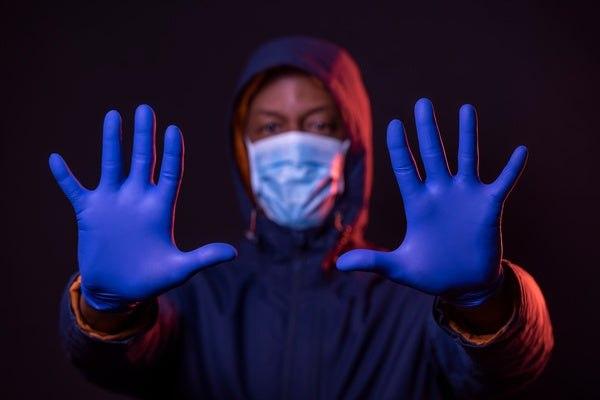
The bias built into the health system means they will have worse outcomes on average if they get sick
In recent weeks, my patients in an urgent care in central Brooklyn came in progressively sicker by the day. They were mostly Black and Brown. Many complained of fever, cough and worsening shortness of breath. I even sent a few of the sickest patients to the ER. COVID-19 had arrived in New York City in full-form, hitting its largely Black and Brown areas the hardest.
Only mere weeks into the COVID-19 pandemic, epidemiologists have not yet had the opportunity to disaggregate nationwide morbidity and mortality data by race, but Black Americans will undoubtedly be one of the most harshly affected demographic groups.
This pandemic will likely magnify and further reinforce racialized health inequities, which have been both persistent and profound over the last five decades, and Black Americans have experienced the worst health outcomes of any racial group.
Black Americans will be more vulnerable to the consequences of the COVID-19 pandemic because of several manifestations of structural racism, including lack of access to testing, a higher chronic disease burden and racial bias within health care institutions.
One of the main solutions to combating COVID-19 is widespread testing that would allow us to cohort and quarantine groups of patients who test positive so as to restrict the spread of disease. However, COVID1-9 testing has had limited availability for a variety of reasons, including ineffective federal leadership, the bureaucracy of federal agencies and an uncoordinated health care system.
As a physician, I’ve found it upsetting that celebrities and government officials without symptoms have been able to access testing quickly with same-day results, while I’ve had to ration out testing to my patients with turnaround times of five, seven and sometimes 10 days as a result of backlogs.
Although the Families First Coronavirus Response Act, passed on March 18, covers all uninsured people, Black people have the highest rates of not being insured. With COVID-19 testing, it becomes painfully obvious who in reality can access testing and who cannot.
We should be especially concerned about Black Americans’ vulnerability to COVID-19 given that they have relatively high chronic disease burdens—specifically diabetes, asthma and hypertension—and so are at a higher risk for developing serious complications from the novel coronavirus.
Additionally, even when Black patients seek care for their COVID-19 symptoms, they will likely receive worse care than other patients since it’s more likely they will seek care at minority-serving hospitals, which have been shown to provide lower quality care and are beset with a shortage of critical care physicians, personal protective equipment and ventilators for dealing with critically ill COVID-19 patients.
Given our health care system’s lack of preparedness and capacity, health workers will likely need to ration care as well. That’s another problem since research has shown that most health care workers appear to have implicit biases that result in relatively positive attitudes toward white patients and negative attitudes toward people of color. Recently, an algorithm widely used by health care systems significantly underestimated the needs of the most chronically ill Black patients, further reinforcing racial health disparities. If rationing does happen, it will almost certainly be more harmful for Black patients.
Another concern is the possibility that quarantines will be end up being enforced by the police. Last week, I received an e-mail from my employer with a letter to show police in the event I was stopped on my way to work. Instead of feeling reassured by the letter, as a Black woman I felt scared about the possibility of interacting with them. Research has shown that Black people are more likely to be stopped by police than white or brown residents. And when law enforcement officers initiated an interaction, they were twice as likely to threaten or use force against Black and brown people than white people.
Each day, we are learning more and more about COVID-19 and how it behaves. The guidelines and recommendations are evolving quickly. However, significant preexisting racial inequities persist and will likely worsen in an environment with increasingly limited and strained resources. So, what can be done to ensure that each and every patient receives racially equitable care? Those leading the COVID-19 efforts should consider using racial equity tools, such as the Government Alliance on Race and Equity (GARE) tool, to help explicitly and intentionally address racialized health inequities and to operationalize racial equity in their work.
Given that racism has been institutionalized into the health care system, just as it has in practically every other system in America, racial equity tools can help to provide structure for considering the issue in COVID-19 pandemic practices, polices, programs and budgets. They can do so through identifying goals and defining measurable outcomes; engaging the community in decision-making processes; and identifying which groups will benefit or be burdened by a given decision.
If racialized health inequities amidst this pandemic are explicitly addressed, Black Americans will have a fairer and greater opportunity to be healthier. And that will improve the health of all Americans.
Source : Scientific American By Uché Blackstock
Also Read : Ghana records 52 coronavirus cases with 2 deaths